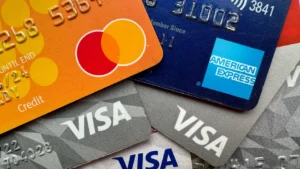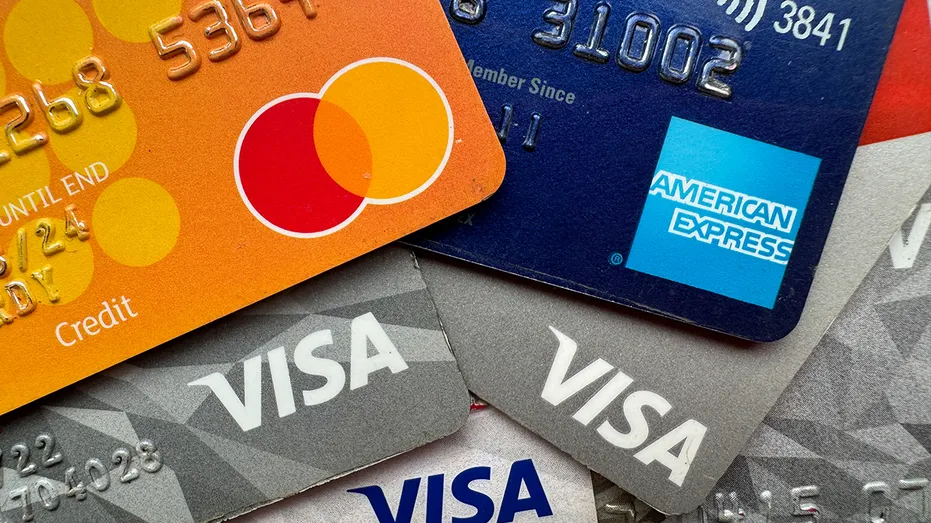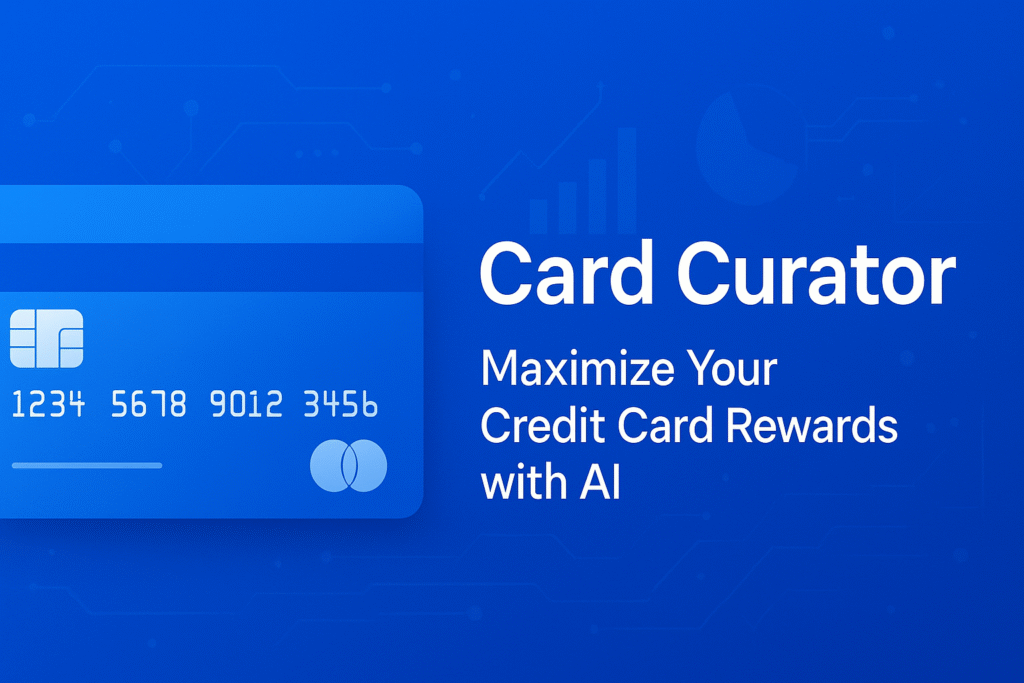
Your Guide to Credit Cards and Rewards: Spend Smarter, Earn More 💳✈️
Credit cards can be powerful tools for earning rewards that save you money or fund dream vacations—but only if used wisely. Misuse them, and you risk a debt spiral. This guide introduces you to credit cards and their rewards, showing you how to make them work for YOU. From avoiding debt to maximizing points, here’s everything you need to know to spend smarter and earn more! 💸
Disclaimer: Always pay off your balance monthly to avoid debt. Consult a financial advisor for personalized advice.
📌 Credit Cards: A Tool, Not a Trap
A credit card is not free money—it’s a financial tool that requires discipline. Follow these golden rules to stay safe and unlock rewards:
- Treat it like a debit card: Only spend what you can pay off immediately.
- Pay your balance in full every month: Avoid interest charges that can erase your rewards.
- Stay debt-free: Paying off your balance ensures rewards are a bonus, not a burden.
With these habits, you’re ready to explore the world of credit card rewards!
🎉 Types of Credit Card Rewards
Credit card rewards come in two main forms, each suited to different goals. Here’s the breakdown:
1️⃣ Cash Back: Simple and Reliable
- How it works: Earn a percentage of every dollar spent, typically 1.5%–2%.
- Example: Spend $100, get $1.50–$2 back.
- Pro: Instant savings on every purchase, ideal for those who value simplicity.
2️⃣ Reward Points: High-Value Potential
- How it works: Earn points redeemable for cash, gift cards, or transferable to airline/hotel programs for greater value.
- Example: Spend $10,000 on a card earning 1 point per $1:
- Cash value: $100 (1% back).
- Airline transfer: Book a $300 flight for 10,000 points (3% back).
- Warning: Poor redemptions (e.g., 10,000 points for a $50 reward) can drop point value to 0.5%. Redeem strategically!
💡 Maximizing Rewards: Top Strategies
To get the most from your credit card, use these proven strategies:
- Chase Sign-Up Bonuses: Many cards offer 50,000–100,000 bonus points when you meet a spending requirement. These are a fast track to big rewards.
- Use the Right Card for Each Purchase: Some cards give bonus points in specific categories (e.g., 5x on travel, 3x on dining). Match your spending to the card’s strengths.
- Transfer Points Wisely: Redeem points for flights or hotel stays where they stretch further. Transferring to airline or hotel partners often yields higher value than cash redemptions.
🔥 Premium Cards: Amplify Your Points
Premium cards from ecosystems like Chase, Amex, or Capital One come with high annual fees but offer game-changing benefits, especially for travel rewards.
- Example: The Chase Freedom Unlimited earns 1.5x points on all purchases, but those points only become transferable to airlines/hotels if you also hold a premium card like the Chase Sapphire Preferred or Reserve.
- Is it worth it?: Premium cards are best for frequent travelers or high spenders who can offset fees with perks like travel credits or enhanced point value. For others, low-fee cards may suffice.
🛠️ One Ecosystem vs. Multiple: What’s Your Strategy?
Choosing the right rewards strategy depends on your spending habits and goals. Here’s how to decide between sticking to one rewards ecosystem or using multiple, plus whether airline/hotel cards are worth it.
1️⃣ Low Spending? Stick to One Ecosystem
- Why? Consolidating spending with one bank’s cards (e.g., Chase, Amex) simplifies earning and redeeming points.
- Pro: Build a larger pool of points in one program, making it easier to save for big redemptions like business-class flights or luxury hotel stays.
- Pro Tip: Choose cards with low or no annual fees if your spending is modest to avoid fees outweighing rewards.
2️⃣ High Spending? Consider Multiple Ecosystems
- Why? High spenders (e.g., via business expenses or organic purchases) can benefit from multiple ecosystems, each offering unique transfer partners and bonus categories.
- Benefits:
- Access to exclusive signup bonuses worth thousands of points.
- Flexibility to mix and match rewards across airlines/hotels.
- Con: Spreading spending can dilute points, making it harder to amass enough for big redemptions.
- Pro Tip: Use apps to track bonus categories and focus on ecosystems with partners that align with your travel goals.
3️⃣ Are Airline or Hotel Cards Worth It?
Unlike flexible bank cards, airline and hotel cards (e.g., United, Delta, Hilton, Marriott) lock rewards to a specific brand. Here’s when they make sense:
- Not Worth It If:
- You rarely travel or don’t stick to one airline/hotel brand.
- Locked rewards limit flexibility, especially with poor redemption options.
- Better option: Choose a bank card with transferable points for more flexibility.
- Worth It If:
- You frequently fly with one airline (especially if it’s a hub at your airport) or stay at a specific hotel chain.
- Perks: Free checked bags (saves $60+ per roundtrip), priority boarding, room upgrades, elite status boosts, or bonus miles/points on brand purchases.
- Example: If you fly a major airline 3–4 times a year, perks like free luggage can offset a $95–$150 annual fee in one trip.
- Pro Tip: Look for cards with extras like companion passes, annual free nights, or credits to justify the fee.
🌍 Credit Card Ecosystems: Maximize Your Rewards!
Here’s an overview of the top credit card ecosystems to help you earn points for travel, cashback, or more. Each ecosystem has unique strengths, and I’ve linked to in-depth guides for Chase, Amex, and Capital One to help you dive deeper. Golden rule: Only spend what you can pay off monthly to avoid debt! Let’s break it down:
1️⃣ Capital One: The Beginner’s Champion
- Why it shines: Perfect for those who want simplicity without managing multiple cards.
- Ecosystem: Small but mighty—Venture (travel) and SavorOne (dining/entertainment).
- Standout feature: Venture card earns 2x points on every purchase, making it a no-brainer for consistent rewards.
- Best for: Starters or low-maintenance users who want solid returns without complexity.
- Tip: Pair Venture with SavorOne for boosted points on dining and streaming, then redeem for travel or transfer to partners like Air France for premium flights.
- Learn More: Check out my Capital One Venture X Guide for a deep dive into this ecosystem.
2️⃣ Chase: The All-Round Superstar
- Why it ranks #2: Incredible flexibility with a robust ecosystem for earning and redeeming points.
- Ecosystem: Includes Sapphire Preferred/Reserve, Freedom Flex/Unlimited, and co-branded cards (United, Southwest).
- Key perk: Redeem points through Chase’s travel portal at 1.25x (Preferred) or 1.5x (Reserve) value, or transfer to partners.
- Highlight: Sapphire Preferred ($95 annual fee) is a steal for its 5x points on travel, 3x on dining, and access to top transfer partners.
- Best transfer: World of Hyatt for amazing hotel redemptions (e.g., free nights at luxury properties).
- Best for: Those willing to learn the system and combine cards for massive point hauls.
- Tip: Use Freedom cards for bonus categories (e.g., 5x on rotating quarters) and Sapphire for travel redemptions.
- Learn More: Explore the Chase ecosystem in my Chase Master Guide.
3️⃣ Amex: The High Spender’s Playground
- Why it’s unique: Offers a vast ecosystem with huge signup bonuses and premium perks.
- Ecosystem: Gold, Platinum, Green, and co-branded cards (Delta, Marriott).
- Key perk: High annual fees (e.g., $695 for Platinum) but loaded with credits (Uber, airline fees, dining) that can offset costs if you use them.
- Standout feature: Massive signup bonuses (e.g., 80k+ points) and strong earning rates (e.g., 4x on dining with Gold).
- Best for: Big spenders who travel often, dine out, and can maximize credits/perks.
- Downside: Points are less flexible than Chase, and high fees aren’t worth it unless you use benefits.
- Tip: Target Amex Offers for extra savings and transfer to partners like ANA for long-haul business class deals.
- Learn More: Dive into the Amex ecosystem with my Amex Master Guide.
4️⃣ Other Ecosystems (Citi, US Bank, Wells Fargo)
- Overview: These are niche players with specific strengths but don’t match the big three’s versatility.
- Citi: Decent for AAdvantage or Costco fans, but limited transfer partners.
- US Bank: Altitude cards offer good travel perks, but ecosystem is small.
- Wells Fargo: Emerging with cards like Autograph, but lacks robust transfer options.
- Best for: Specific use cases (e.g., Citi for American Airlines loyalists).
- Tip: Stick to Capital One, Chase, or Amex unless you have a clear reason to diversify.
💡 My Strategy Advice
- Low spend (<$2k/month): Stick to one ecosystem (Capital One for simplicity, Chase for growth). Focus points for big redemptions like a dream vacation.
- High spend: Mix ecosystems (e.g., Chase + Amex) to leverage unique perks and partners, but track points to avoid dilution.
- Pro move: Always check transfer partner values (e.g., Chase to Hyatt, Amex to ANA) for 2–3x value vs. cashback.
🚀 Key Takeaways
- Use credit cards responsibly: Pay off your balance monthly to avoid interest and keep rewards profitable.
- Choose your rewards: Cash back for simplicity, points for high-value travel redemptions.
- Maximize value: Leverage sign-up bonuses, bonus categories, and smart redemptions.
- Pick a strategy:
- Low spenders: Stick to one ecosystem for simplicity and big redemptions.
- High spenders: Use multiple ecosystems for flexibility, but avoid diluting points.
- Airline/hotel cards: Only get them if you’re loyal to a brand and travel often enough to offset fees.
💬 Join the Conversation!
What’s your favorite credit card reward—cash back or points? Do you stick to one ecosystem or juggle multiple? Are you loyal to an airline or hotel brand? Share your thoughts in the comments below! Want to dive deeper? Join my WhatsApp group to discuss your rewards strategy: Join the Rewards Squad. Let’s make your spending work harder for you! 💪
Tags: #CreditCards #Rewards #TravelHacks #PersonalFinance #SmartSpending






